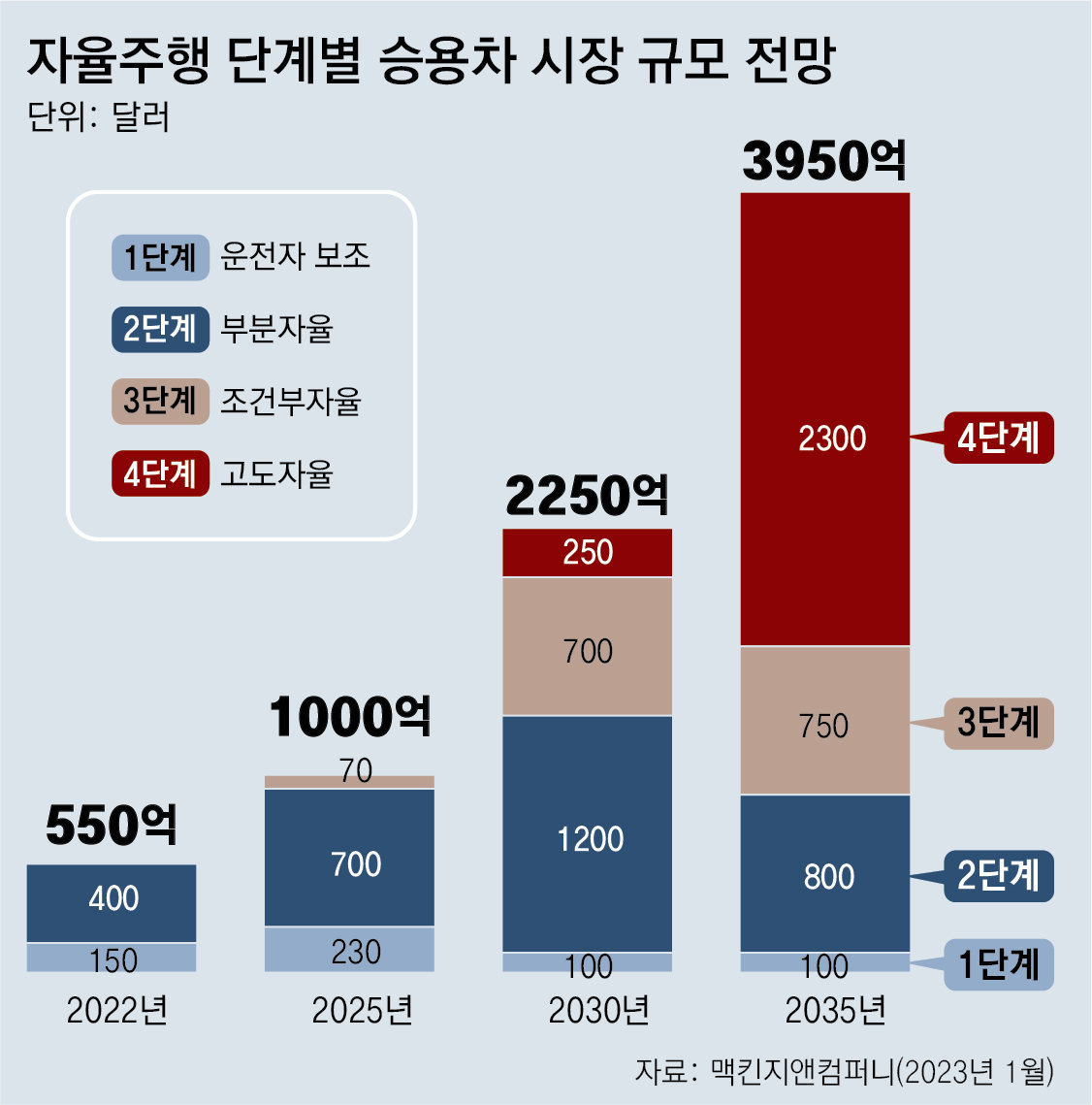U.S. robotaxi operation halted after two months
Firefighting and ambulance interference occurred in 70 cases this year alone.
“It’s only a temporary contraction, but it will continue to grow”
Korea aims for fully autonomous driving in 2027
Cruise, the self-driving subsidiary of General Motors (GM) in the United States, stopped operating unmanned robotaxi on the 24th of last month (local time). It has been about two months since 24-hour commercial operation began in San Francisco, USA in August. The decisive factor was that a Cruz robotaxi dragged a female pedestrian who had been hit and run at an intersection in downtown San Francisco without being able to spot her. There was no harm to the victim’s life, but Cruise CEO Kyle Vogt resigned due to this incident.
The self-driving car market, which has been highlighted as a future food market, is struggling with various negative factors. San Francisco fire authorities revealed in a recently released report that there were 73 cases of fire trucks and ambulances being obstructed by robotaxi from April last year, when robotaxi began full-scale pilot operation, to August this year. Of these, 70 occurred this year.
As problems continued, investment came to a halt. According to the Korea Automobile Research Institute (Han Ja-yeon) on the 27th, among global automakers, five companies, including U.S. GM, Germany’s Volkswagen and BMW, Japan’s Toyota, and China’s Geely Automobile, that disclosed their research and development (R&D) investment amount, invested in autonomous driving from January to September of this year. The investment amount related to cars was only $47 million (about 60 billion won). Although there are still three months left, the figure is sharply lower than last year’s $3.812 billion (about 5 trillion won).
Analysis suggests that the reason why investment in autonomous driving technology has cooled this year is because companies are focusing their investments on the electric vehicle sector, where competition is fierce. In fact, the five companies’ investment in electric vehicles increased by 35% from $2.07 billion last year to $2.793 billion this year.
In addition, as accidents occurred one after another with Cruise and Waymo robotaxi, which were at the forefront of autonomous vehicle technology development, the automobile industry is adjusting the pace of R&D investment. Lee Hang-gu, head of the Automotive Convergence Technology Institute, said, “As numerous incidents occurred, such as self-driving cars blocking emergency fire trucks, a negative image quickly spread not only to consumers but also to the automobile industry.”
However, it is only a temporary decline in investment and the autonomous vehicle market is expected to continue to grow. According to the January mobility demand forecast by U.S. management consulting firm McKinsey & Company, the autonomous vehicle market (including driving assistance) is estimated to be worth up to $55 billion (approximately KRW 71.8 trillion) in 2022, and is expected to reach up to $395 billion in 2035. It is expected to grow to
Even in Korea, there are difficulties in developing fully autonomous vehicles. A representative example is that Kia gave up its plan to apply level 3 (conditional) autonomous driving technology to its new car ‘EV9’ this year. Hyundai Motor Group said, “We are facing more variables in actual road driving situations than we initially expected,” and added, “We decided that more time is needed to meet customer expectations.”
However, the Ministry of Land, Infrastructure and Transport plans to proceed without a hitch with the step-by-step strategy (roadmap) prepared last year to open the ‘Level 4’ (high level) era of fully autonomous driving in 2027. To this end, the Ministry of Land, Infrastructure and Transport increased the number of autonomous driving pilot districts from 16 districts in 12 cities and provinces to 24 districts in 15 cities and provinces in June. An official from the Ministry of Land, Infrastructure and Transport said, “Among the 420 self-driving cars that were permitted to operate in the pilot operation zone as of early this month, there have been no casualties or major vehicle-to-vehicle contact accidents,” adding, “Verification of public transportation services such as demand-responsive buses is also without difficulty.” “It’s progressing,” he said.
Source: Donga
Mark Jones is a world traveler and journalist for News Rebeat. With a curious mind and a love of adventure, Mark brings a unique perspective to the latest global events and provides in-depth and thought-provoking coverage of the world at large.

